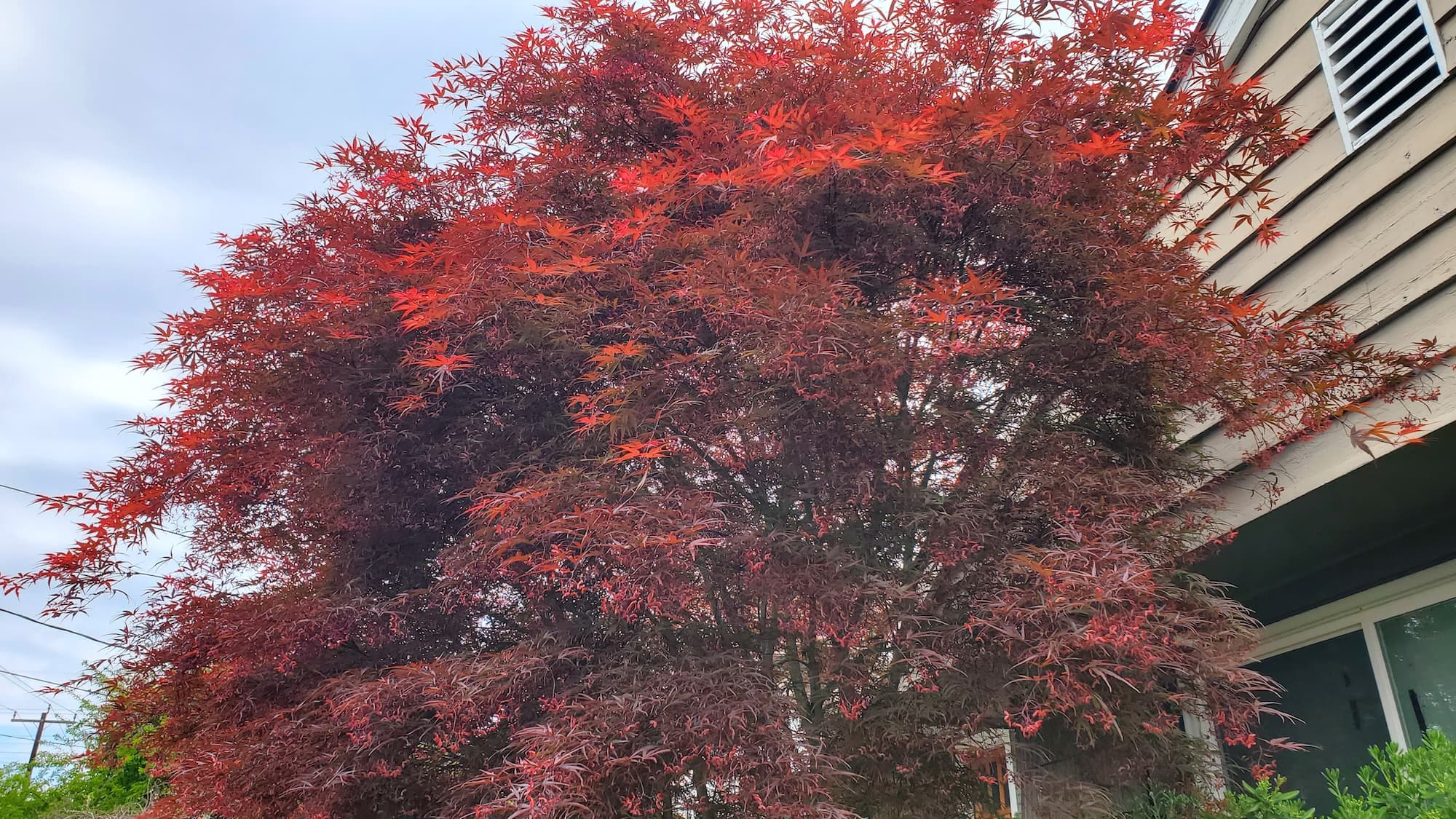West Seattle Crown thinning
Homeowner’s Issue
West Seattle yards face a particular set of problems: heavy winter rains, shallow urban soils, and generous shade from mature maples, cedars, and Douglas-firs. Many properties on slopes—Admiral, High Point, and the hills above Fauntleroy—get saturated in winter, which stresses roots and raises the chance of branch failure in wind storms off the Sound. Compacted fill and glacial till are common and can hide girdling roots or unstable anchoring that becomes obvious once canopies get dense.
Dense crowns reduce light to lawns and plantings, trap moisture against bark (moss and lichen build-up), and increase wind sail during fall and winter storms. Ivy and Himalayan blackberry pressure is higher in shaded, disturbed areas, which competes with trees and hides structural defects. HOAs and neighborhood associations around Alki and Lincoln Park often expect tidy street-facing trees for curb appeal and safety, while Seattle’s summer watering windows make recovery after pruning slower—so timing matters.
Homeowners here want clean sightlines for views of the Sound, safe branches over sidewalks and roofs, and lower maintenance. Crown thinning, done with sustainable methods and attention to local soil and microclimate, reduces storm risk, improves light and air flow, and keeps properties looking cared-for without constant follow-up work.
Our Quality Service
We do selective crown thinning focused on tree health and public safety. Our crew assesses structure, removes crowded or hazardous limbs, and preserves natural form. We use hand tools, pole pruners, and low-impact rigging where needed—no herbicides, only mechanical and organic methods.
Typical timeline: consult and estimate (1–3 days), on-site pruning (half day to two days per tree depending on size), cleanup and haul-away same day. Larger jobs may require a day or two and staged work for safety. We schedule to avoid heavy rain when possible and advise on seasonal windows that suit West Seattle’s marine climate.
Local insight: expect wetter winters and drier summers—mulch and root protection after pruning improve recovery. On slopes, we factor runoff and erosion control into cuts to avoid destabilizing the root plate. Benefits include improved safety, reduced storm damage, clearer views, and lower long-term maintenance.
What’s Included
- On-site assessment and written quote.
- Selective thinning to reduce canopy density while preserving tree shape.
- Removal of dead, crossing, or hazardous branches.
- Debris cleanup and green waste haul-away or staged curbside bins.
- Final site sweep and basic pruning for understory shrubs if requested.
Options / Upgrades:
- Mulch application (wood chips) around dripline for moisture and soil health.
- Organic soil amendment or compost top-dress.
- Moss and ivy hand-removal and replanting suggestions.
- Fabric + mulch for garden beds (low-impact, biodegradable options).
- Haul-away vs. green bin sorting per city rules.
Before & After / Expectations
Expect some noise and sawdust on service day; larger trees mean more debris and a modest recovery window. We keep work areas contained and use tarps where possible. Property access (driveway or curb) needs to accommodate chipper or truck; tight access may add time.
Typical visible changes: lighter canopy, better sightlines, and more light to lower plants. Recovery takes several weeks for leafing trees in spring and longer in summer droughts. We’ll leave chips for mulch unless you prefer haul-away or green bin disposal.
Care tips for West Seattle:
- Mulch 2–3 inches after pruning, leaving a gap at the trunk.
- Hold off heavy watering during fall rains; deep soak in late spring/summer if dry more than two weeks.
- Watch for re-sprouting from large cuts; plan light follow-up pruning in 6–18 months.
- Monitor moss and ivy—remove by hand to avoid bark damage.
FAQs
Q: When is the best time to thin trees in West Seattle?
A: Late winter to early spring is best for most species here; avoid heavy winter storms and deep summer drought. Evergreen pruning can be done in dry weeks.
Q: Will pruning hurt my tree?
A: Properly done thinning relieves weight and wind load. We remove no more than 20–30% of live canopy unless structural work calls for more.
Q: Do you use chemicals for weed or moss control?
A: No. We use hand removal, mechanical scraping, and organic amendments only.
Q: How long does cleanup take?
A: We remove branches and grind or haul chips the same day for most residential jobs. Larger municipal-sized loads may require next-day haul-away.
Q: Do you handle HOA or permit requirements?
A: Yes. We’ll flag potential permitting needs for street trees or trees with protective covenants and can coordinate with associations.
Call to Action
West Seattle homeowners: book a free estimate and get a sensible plan for safer, healthier trees. We book quickly and prioritize storm-risk work. Trusted local crew, practical solutions, and sustainable methods.
Email: neatandtidyseattle@gmail.com
Phone: 206-538-9344
Licensed • Bonded • Insured
For more details see our service page: https://www.neatandtidyseattle.com/maintenance/west-seattle-crown-thinning/










